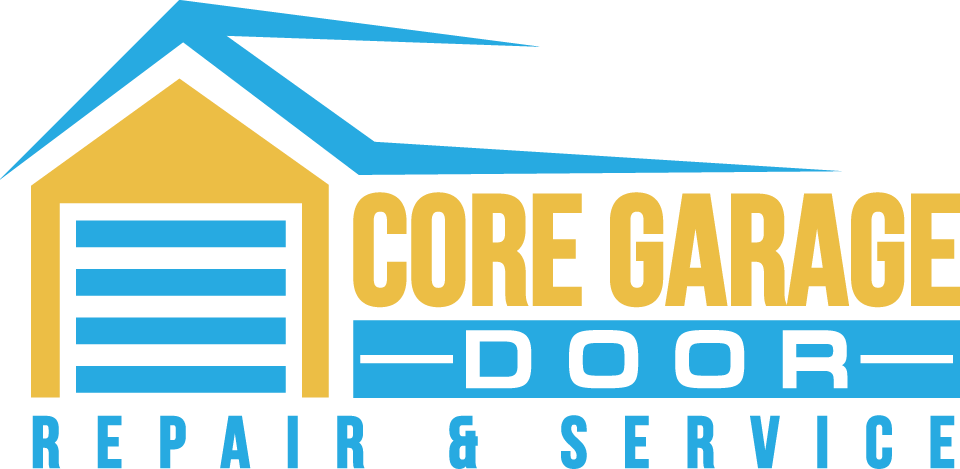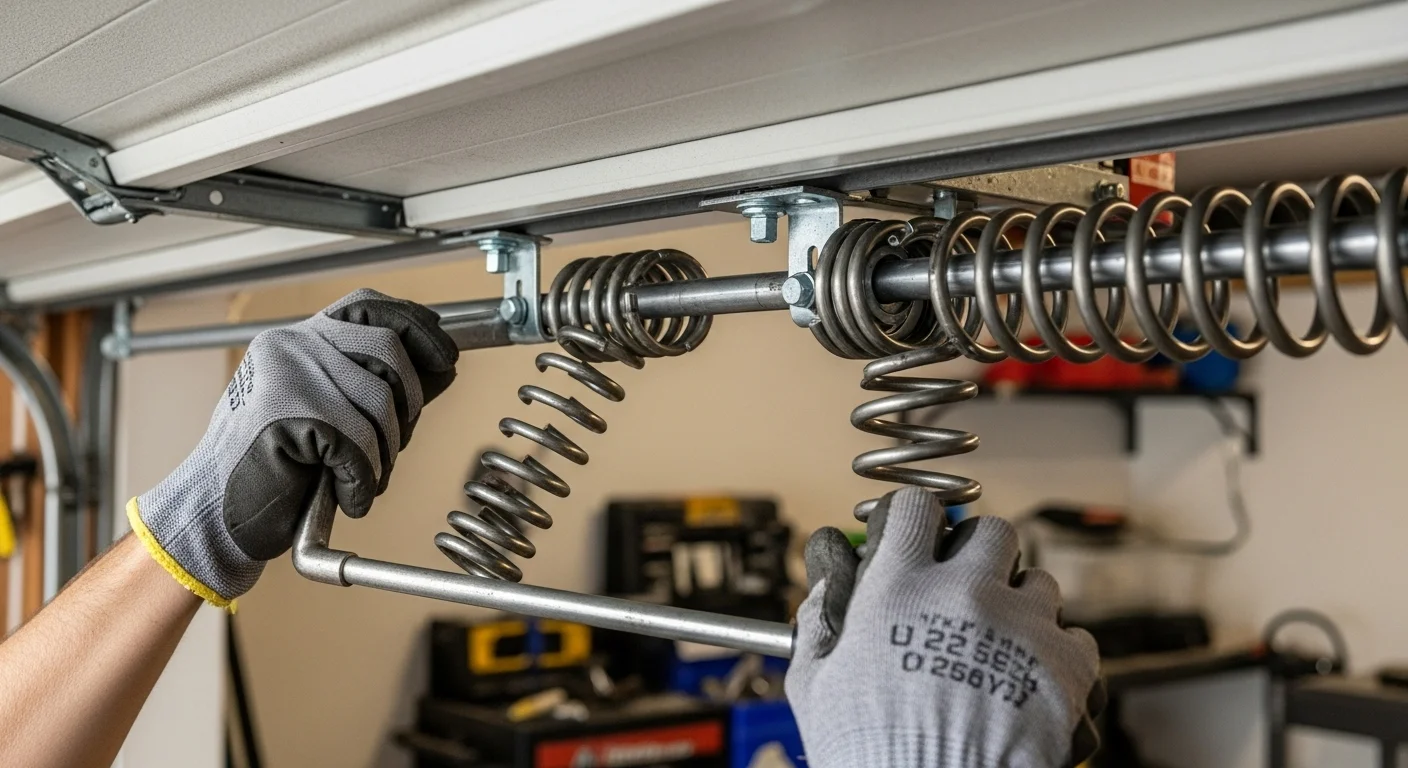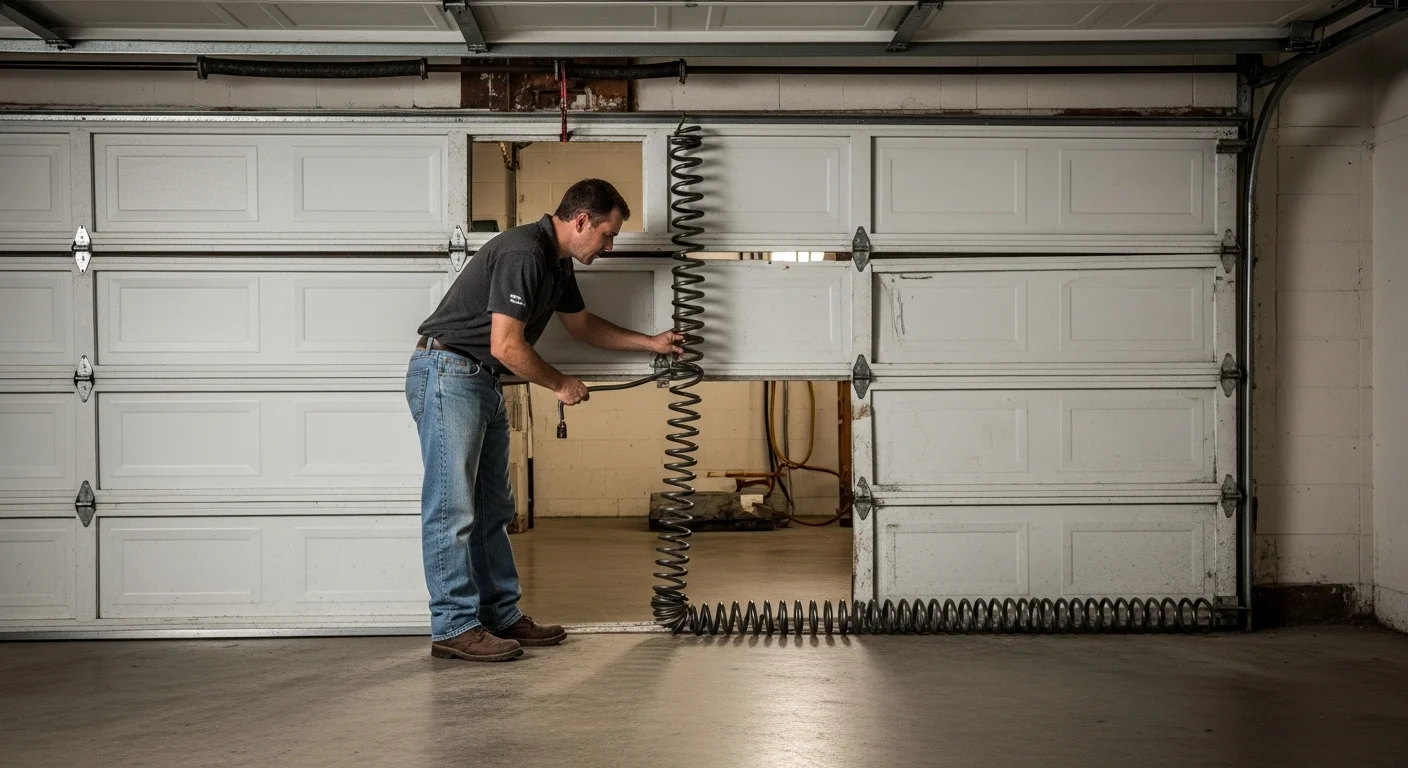Garage door springs play a crucial role in the smooth functioning of your garage door. Understanding their importance and knowing how to maintain and care for them can save you time, money, and potential safety hazards. In this blog, we will explore 16 essential things you need to know about garage door springs. By the end, you’ll have a comprehensive understanding of these critical components and be better equipped to ensure the longevity and efficiency of your garage door system.
1. Types of Garage Door Springs:
There are two main types of garage door springs: torsion springs and extension springs. Torsion springs are installed above the garage door and use torque to operate, while extension springs are typically mounted on both sides of the door and expand and contract to provide lifting force.
2. Understanding Garage Door Spring Lifespan:
Garage door springs have a limited lifespan, typically measured in cycles. A cycle refers to one full opening and closing of the garage door. On average, springs last between 7,000 and 20,000 cycles, depending on the quality of the springs and the level of maintenance.
3. Signs of Worn-Out Springs:
Pay attention to signs of worn-out springs, such as visible gaps, excessive noise, uneven movement, or difficulty in opening and closing the garage door. If you notice any of these symptoms, it may be time to replace your springs.
4. Safety Precautions:
Dealing with garage door spring can be dangerous. It is recommended to hire a professional technician for installation, repair, or replacement to minimize the risk of injury.
5. Balancing the Door:
Proper spring tension is crucial for a balanced garage door. An unbalanced door can strain the opener and cause premature wear and tear. Regularly check the balance and perform adjustments as needed.
6. DIY or Professional:
While some maintenance tasks can be handled by homeowners, such as lubrication and visual inspections, spring replacement or adjustment should be left to professionals due to the inherent risks involved.
7. Regular Lubrication:
Applying a silicone-based lubricant to the springs every six months helps reduce friction and promotes smooth operation. Avoid using oil-based lubricants, as they attract dirt and debris.
8. The Importance of High-Quality Garage Door Springs:
Investing in high-quality springs can significantly extend their lifespan. Cheap, low-quality springs may wear out quickly, leading to more frequent replacements and potential safety risks.
9. Spring Safety Cables:
Installing safety cables through the extension springs is crucial to prevent serious injuries or property damage in case of a spring failure. These cables act as a restraint to keep the spring in place.
10. Annual Professional Inspection:
Schedule an annual inspection with a garage door professional to ensure your springs are in good condition. They can identify any issues early on and provide necessary maintenance or replacements.
11. Climate Considerations:
Extreme temperatures and weather conditions can affect the performance of your garage door spring. Consider using springs specifically designed for your region’s climate to minimize potential problems.
12. Weight Capacity:
Garage door springs are designed to handle a specific weight capacity. Ensure that your springs are suitable for the weight of your garage door to prevent unnecessary strain and premature failure.
13. Spring Replacement in Pairs:
When one spring breaks or wears out, it is highly recommended to replace both springs at the same time. This ensures even tension and helps avoid future imbalances or uneven wear.
14. DIY Spring Replacement Risks:
Attempting to replace garage door spring yourself can be dangerous and should be avoided. The high tension stored in the springs can cause severe injury if mishandled. Always rely on professional help for spring replacements.
15. Regular Visual Inspections:
Inspect your garage door spring regularly for signs of wear, damage, or rust. Promptly address any issues to prevent further damage and ensure the safety of your garage door system.
16. Spring Safety Training:
Educate yourself and your family members about the potential risks associated with garage door springs. Teach everyone how to recognize warning signs and what precautions to take to avoid accidents.
Conclusion:
Garage door springs are integral to the smooth and safe operation of your garage door. By understanding their importance, following proper maintenance practices, and knowing when to seek professional help, you can ensure the longevity and efficient functioning of your garage door system. Stay vigilant, prioritize safety, and address any spring-related issues promptly to enjoy a hassle-free garage door experience.
Click Here for Essential Tips on Garage Door Spring Maintenance





